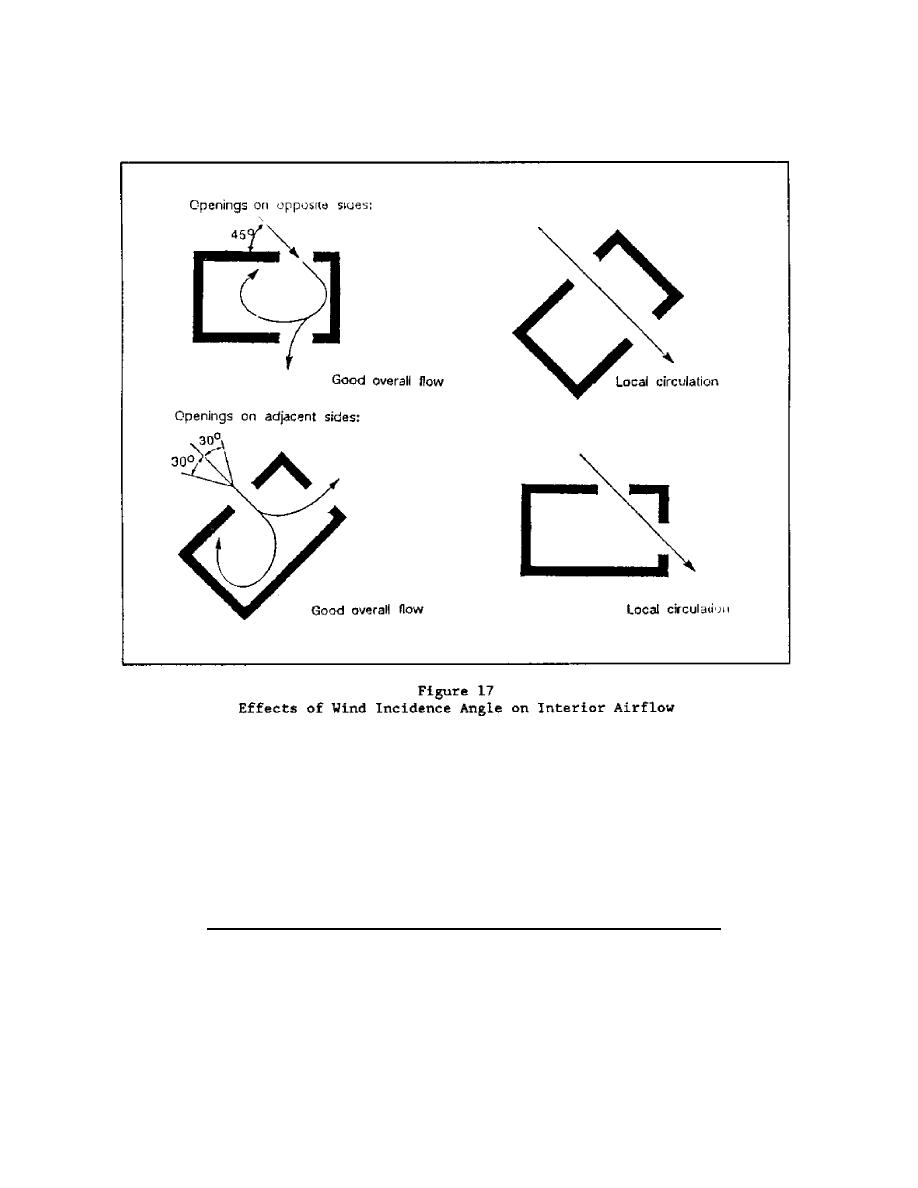
MIL-HDBK-1011/2
Wind approaching at an incidence angle of 45 degrees results in interior
velocities that are 15 to 20 percent lower than when the wind approaches
perpendicular to the face (see Figure 17).
When windows are in opposite walls, a 45-degree incidence angle
gives the maximum average indoor air velocity and provides better distribution
of indoor air movement. Wind approaching at 90 degrees is 15 to 20 percent
less effective. Wind parallel to the ventilation face produces ventilation
depending entirely on fluctuations in the wind and is therefore very uncertain
(see Figure 17 and para. 4.5.4).
4.4.2.3
Resolving Conflicts between Thermal and Wind Orientations. Where
optimal solar orientation and wind orientation are opposed, solar
considerations usually take precedence. In general, inlets for natural
ventilation can more easily be designed to accommodate for less than optimal
wind orientations than solar control devices (see Figure 17). This is
especially true in highrise buildings where orientation to reduce solar gains
is most important. However, if the building is low-rise, well- insulated, has
a light external color and has effectively shaded windows then the change in
30



 Previous Page
Previous Page
